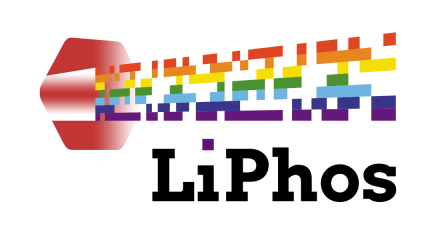
LiPhos - Living Photonics: Monitoring light propagation through cells
http://www.liphos.eu/
From a photonic point of view, a cell culture or a tissue sample can be considered as a biomaterial with unique optical properties (spectral response, refractive index, etc.) which arise from its constituent elements i.e. the cells and the surrounding extracellular matrix. The idea behind LiPhos is to exploit these characteristics to develop the new generation of biophotonic diagnosis tools (BDT) in which cells are, for the very first time, used for defining the core of the waveguide, giving rise to the “Living Photonics” concept.
Measurement protocols will consist of the determination of the Photonic Fingerprint (PIN) of the biological system under study. Comparison of these PINs using confidence margins previously established by the consortium will provide accurate diagnosis of cardiovascular diseases (CVD).
The LiPhos project started on 1st November 2012 and is due to run for a period of 3 years. It has 8 partners from 5 different countries. LiPhos is partly funded by the EU 7th Framework Programme (Project No. 317916).
FP7 Topic: ICT-2011.3.5 Core and innovative photonic technologies
Total cost: € 4.18M, EC funding: € 3.2M
The project has been successfully completed.

d-LIVER - ICT-enabled, cellular artificial liver system incorporating personalized patient management and support
http://www.d-liver.eu/
The overall goal of the d-LIVER project is to provide safe and cost-effective systems for continuous, context-aware, multi-parametric monitoring of patient with chronic liver disease in order to: enhance the quality of medical treatment and management; improve the quality of life for patients; reduce the incidence and duration of hospitalization and consequently reduce the health economic burden of chronic liver disease. d-LIVER also addresses the need for an ICT‑enabled bio-artificial liver support system (BAL) to facilitate detoxification as remote transient therapy at the point of need, offering continuous care from hospital to home settings. d-LIVER will facilitate improved treatment whilst enabling patients to spend more time at home under constant, albeit remote, medical supervision.
The d-LIVER project started on 1st October 2011 and is due to run for a period of 4 years. It has 13 partners from 7 different countries. d-LIVER is partly funded by the EU 7th Framework Programme (Project No. 287596).
FP7 Topic: ICT-2011.5.1 Personal Health Systems (PHS)
Total cost: € 14.31M, EC funding: € 10.96M
The project has been successfully completed.
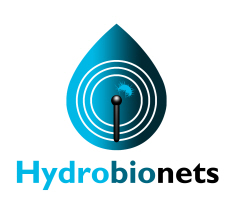
HYDROBIONETS - Autonomous Control of Large-scale Water Treatment Plants based on Self-Organized Wireless BioMEM Sensor and Actuator Networks
http://www.hydrobionets.eu/
The HYDROBIONETS project is motivated by the grand challenge of providing: a) a fundamental understanding of the performance bounds of large-scale Self-Organized Wireless BioMEM Networks (WBNs); b) concrete design guidelines, algorithms, software and hardware architectures to assure the required robustness, fault-tolerance, power efficiency, autonomy and adaptation; c) implementation and deployment of a large-scale and reactive WBN for microbiological autonomous monitoring and decentralized control of water quality in industrial environments.
To achieve this, HYDROBIONETS addresses: a) the distributed acquisition of spatio-temporal biological signals, including the specific design of BioMEMs and their stable integration to motes; b) in-network cooperative processing and distributed intelligence to achieve essential tasks such as inference, detection, and decision-making; c) networked dense control to ensure adequate water quality, productivity and energy efficiency of water treatment plants.
The HYDROBIONETS project started on 1st October 2011 and ran for a period of 3 years. It involved 7 partners from 5 different countries. HYDROBIONETS was partly funded by the EU 7th Framework Programme (Project No. 287613).
FP7 Topic: ICT-2011.3.3: New paradigms for embedded systems, monitoring and control towards complex systems engineering
Total cost: € 3.18M, EC funding: € 2.35M
The project has been successfully completed and the results were demonstrated in a pilot-scale industrial water desalination plant.
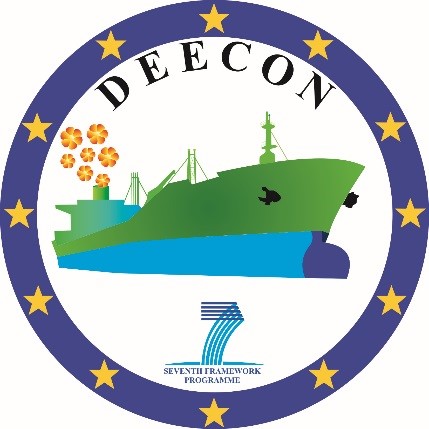
DEECON - Innovative After-Treatment System for Marine Diesel Engine Emission Control
http://www.deecon.eu/
The emission of exhaust gases from ships has been recognised as a main source of pollutants causing a significant exposure risk to people living close to harbours or neighbouring coastal areas. The adoption of the new restrictive regulations requires retrofit modification to the entire commercial fleet to comply with the new emission standards.
The aim of the DEECON project is to create a new, modular, on-board, after-treatment unit that combines different sub-units, each of which is optimized to remove a specific primary pollutant (SOx, NOx, PM and VOC) and is designed to allow an easy and fast retrofit of existing ships but also can be fitted to new ships of the future. The main goal of this new integrated system is the reduction of the environmental footprint of ships through the achievement of a state-of-the-art removal of the target pollutants aimed to reduce their emission factor well below the limits imposed by the current and future regulation.
The DEECON project started on 1st September 2011 and ran for a period of 3 years. It involved 8 partners from 3 different countries. DEECON was partly funded by the EU 7th Framework Programme (Project No. 284745).
FP7 Topic: SST.2011.1.1-2 Retrofitting of existing ships with green technologies
Total cost: € 3.47M, EC funding: € 2.65M
The project has been successfully completed.
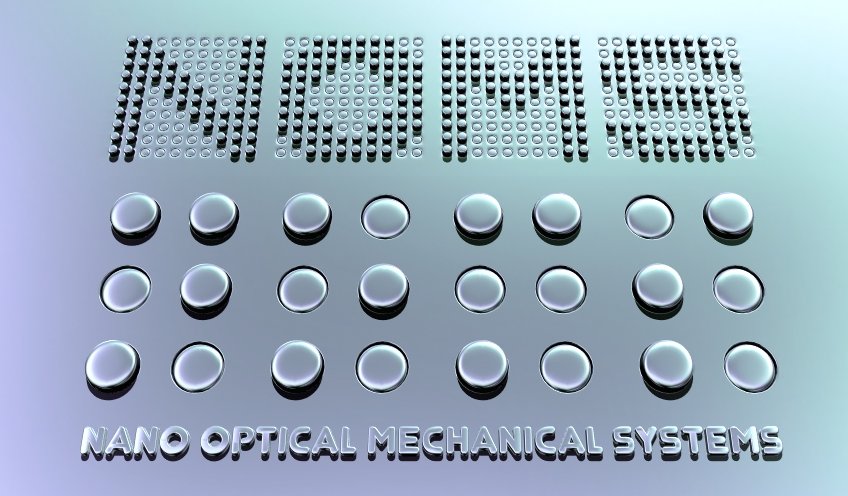
NOMS - Nano-Optical Mechanical Systems
The NOMS project started on 1st September 2009 and ran for a period of 3 years. It involved 9 partners from 5 different countries. NOMS was partly funded by the EU 7th Framework Programme (Project No. 228916).
FP7 Topic: NMP-2008-1.1-1 Converging Sciences and Technologies
Total cost: € 3.39M, EC funding: € 2.55M
The project has been successfully completed.

CD-MEDICS
http://www.etseq.urv.es/cdmedics/
The objective of CD-MEDICS was to obtain an instrument that will be a low cost, non-invasive, intelligent diagnosis system that can be present at Point of Care, such as a doctor’s surgery, which will bring benefits to patients and health care professionals.
The applications of the integrated microsystem and its individual modules for Coeliac Disease diagnosis, monitoring and management are multiple. The analysis of the HLA-DQ2 and 8 genes will provide information on the genetic predisposition of an individual, while serum IgA and IgG indicate antibodies associated with Gluten in the diet.
The CD-MEDICS IP project started on 1st February 2008 and ran for a period of 4 years. It was sponsored under the EU Framework 7 programme to 9.5 million Euros and has 20 partners from 10 countries.
The project has been successfully completed.

SmartHEALTH
http://www.smarthealthip.com
The SmartHEALTH Integrated Project objective was to develop and deliver the next generation of smart diagnostic systems fully integrated into healthcare systems in Europe. Driven by key applications in cancer diagnostics, SmartHEALTH developed next generation diagnostic systems, integrated into an ambient intelligent health care environment, enabling enhanced medical diagnosis and leading to earlier and more precise results and thus contributing to an increased quality of life.
Project Identifier: FP6-2004-IST-NMP-2-016817
Total cost: € 21.8M, EC funding: € 12.3M
The project has been successfully completed.
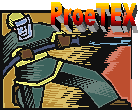
Proetex
http://www.proetex.org
The ProeTEX Integrated Project developed textile and fibre based integrated smart wearables for emergency disaster intervention personnel, aiming to improve their safety, coordination and efficiency and also for injured civilians, optimising their survival management. The technology development created micro-nano-engineered smart textile systems - integrated systems (fabrics, wearable garments) using specifically textile-based micro-nano technologies including sensors, communication, power generation and storage. These are capable of being combined into diverse products addressing this core application area but also a wide range of other markets from extreme sports, through healthcare to transportation maintenance and building workers.
Project Identifier: FP6-2004-IST-4-026987
Total cost: € 12.8M, EC funding: € 8.1M
This project has now been successfully completed.
Sometimes, health conditions can affect the nerves that can slow the flow of blood, lead to erectile dysfunction. It is easy for folk to purchase medicaments online. How it is possible? Millions of consumers order online such medicines like Viagra. What about "sildenafil citrate vs tadalafial" and "viagra vs levitra"? Typically, when folk think about the matter, they mean "levitra vs viagra". The most important point you have to look for is "sildenafil citrate vs vardenafil". There are varied things that can lead to erectile dysfunction. Usually remedies like Viagra has come under serious attention, special regarding its cooperation with some medicines. Also, the best way to avoid sham remedies is to get prescription medications like Viagra from a prestigious web-site with which you are friendly.
